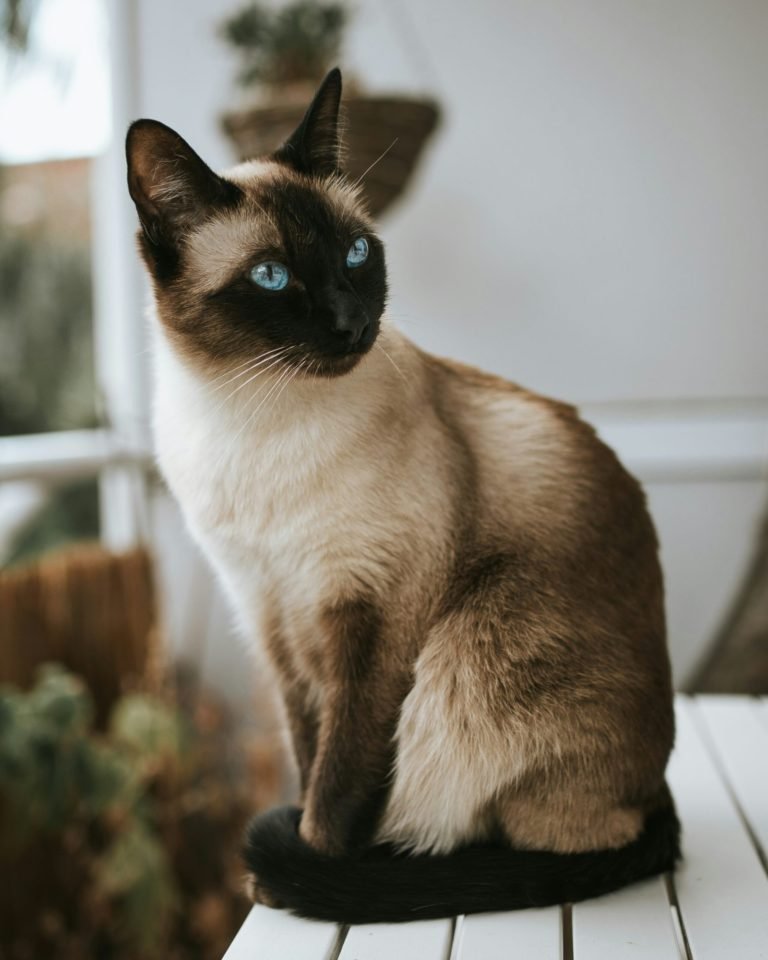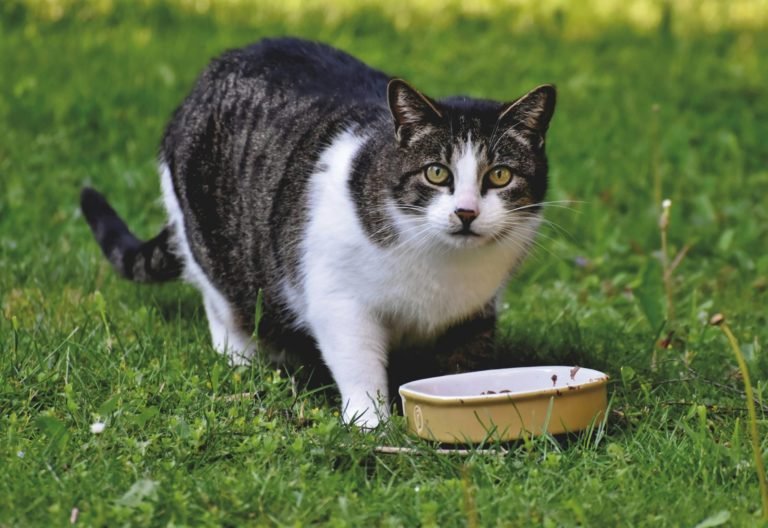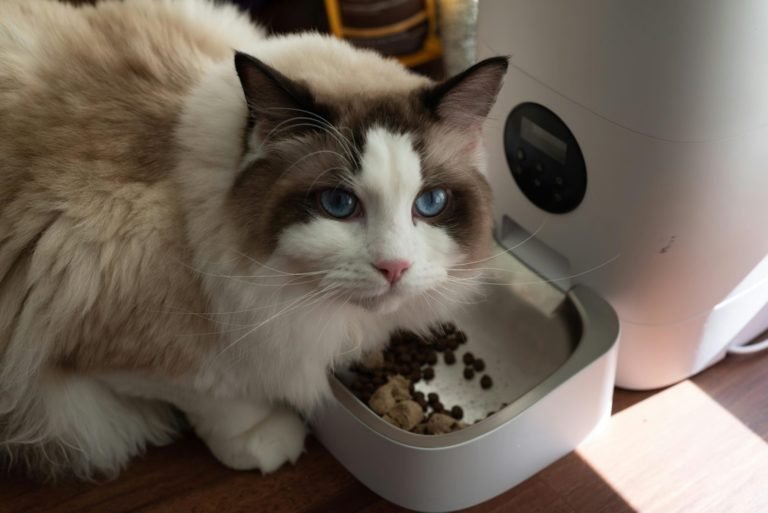Cats, with their enigmatic purrs, playful swats, and independent spirit, have held a special place in our hearts for millennia. But have you ever wondered what goes on behind those captivating eyes? Understanding cat behaviour is the key to unlocking a deeper connection and creating a truly enriching environment for your furry companion.
This comprehensive guide will delve into the fascinating world of feline communication, helping you decipher your cat’s body language, vocalizations, and actions. We’ll explore their essential needs, from proper nutrition to the importance of play, and shed light on some common behaviours that might leave you scratching your head (no pun intended!).
By the end of this journey, you’ll be well-equipped to address any behavioural challenges, create a haven for your feline friend, and foster a relationship brimming with love, trust, and mutual understanding.
So, buckle up, cat lovers, and get ready to embark on a captivating exploration of cat behaviour!
Decoding Your Cat’s Behaviour: The Ultimate Guide to a Happy Feline Friend
The Silent Language: Unveiling Your Cat’s Body Language
Cats are masters of nonverbal communication. Unlike their canine counterparts who rely heavily on vocal cues, felines express themselves through subtle shifts in their posture, facial expressions, and tail movements. By becoming familiar with this “silent language,” you can gain valuable insights into your cat’s emotional state and needs.
Tail Talk: A Waving Wand of Emotions
One of the most expressive parts of a cat’s body is undoubtedly its tail. A high, held-up tail is a universal sign of confidence and friendliness. Imagine a question mark – that’s the posture of a curious and interested kitty. On the other hand, a puffed-up tail indicates fear or aggression. It’s nature’s way of making them appear larger to potential threats. A swishing tail can be a bit more ambiguous, signifying anything from frustration during playtime to playful anticipation.
Reading the Eyes: Windows to the Feline Soul
Eyes are often referred to as windows to the soul, and this holds true for our feline companions as well. Dilated pupils can indicate excitement, fear, or even playfulness, depending on the context. Slow blinking is a sign of contentment and trust, often seen when your cat is feeling relaxed and enjoying your company. However, direct eye contact can sometimes be perceived as a challenge, so be mindful of your gaze if your cat seems tense or uncomfortable.
Ears Perked Up: Listening In on the Feline World
A cat’s ears are incredibly mobile and can rotate to pinpoint sounds with remarkable accuracy. Forward-facing ears signal alertness and interest, while flattened ears pressed against the head indicate fear or aggression. This is a clear sign to give your cat some space and avoid any further interaction that might escalate the situation.
Posture Power: Decoding Your Cat’s Body Language
A relaxed posture with a lowered body screams comfort and trust. Think of your cat sprawled out on a sunny patch of floor, basking in the warmth. Conversely, an arched back with raised fur is a warning sign that your cat feels threatened or scared. It’s best to avoid approaching them in this state and give them time to calm down.
Whiskers: Sensory Superheroes
Those adorable whiskers lining your cat’s face aren’t just for show. They’re crucial sensory organs that help cats navigate their environment and detect even the slightest changes in air pressure. Twitching whiskers often signify curiosity or excitement, especially when your cat spots a potential plaything.
By paying close attention to these subtle cues, you can become an expert decoder of your cat’s body language. In the next section, we’ll delve into the fascinating world of cat vocalizations, helping you understand what your feline friend is trying to tell you through their meows, purrs, and hisses.
Decoding Your Cat’s Behaviour: The Ultimate Guide to a Happy Feline Friend
Cat Capers: Understanding Common Feline Behaviours
Our feline companions can be a source of endless amusement with their quirky antics and playful personalities. But sometimes, their behavior can leave us scratching our heads, wondering what’s going on inside those furry little minds. Let’s explore some common cat behaviors and shed light on their motivations:
Kneading Dough (But Not Baking!): A Comforting Ritual
The rhythmic kneading motion, often seen on soft surfaces like blankets or your lap, might seem like your cat is preparing to bake a loaf of bread. However, this behavior originates from kittenhood. Kittens knead their mother’s stomach to stimulate milk flow during nursing. For adult cats, kneading can be a sign of contentment and happy memories associated with nursing. While a gentle kneading session can be endearing, it can become destructive if done on furniture. Providing scratching posts or a designated kneading blanket can help redirect this behavior.
Grooming Rituals: Keeping Clean and Bonding with Buddies
Cats are meticulous groomers, spending a significant portion of their day meticulously cleaning their fur. This not only keeps them clean but also helps regulate their body temperature and remove loose fur. Social grooming between cats strengthens social bonds and signifies trust and affection. If your cat enjoys being brushed, regular grooming sessions can be a wonderful way to connect and pamper your feline friend.
The Thrill of the Hunt: Stalking, Pouncing, and Play Hunting
Cats are natural-born hunters, and their predatory instincts are deeply ingrained in their behavior. Stalking, pouncing, and play hunting are not just playful antics; they’re essential for honing their hunting skills, even if their prey is just a feathery toy or a rogue dust bunny. Providing ample opportunities for play that mimics hunting, like interactive play sessions with wand toys or puzzle feeders, helps satisfy their natural instincts and keeps them mentally stimulated.
Zoomies: A Burst of Feline Energy
Those sudden bursts of frenzied activity known as “zoomies” is a common cat behaviour in many cat households. Often triggered by excitement, boredom, or the release of pent-up energy, zoomies involve your cat racing around the house, leaping onto furniture, and engaging in a whirlwind of playful antics. While zoomies can be entertaining, they can also be disruptive. Providing enrichment activities like scratching posts, cat trees, and interactive toys can help channel this energy and prevent zoomies from becoming destructive.
Biting and Nipping: Playful Exploration or Undesirable Behaviour?
Kittens often explore the world with their mouths, and nipping can be a normal part of play behavior. However, as kittens mature, this behavior should be discouraged. If your cat nips or bites too hard during playtime, redirect their attention to a toy and avoid using your hands as playthings. Consistent positive reinforcement for gentle play can help curb unwanted biting and nipping.
Decoding Your Cat’s Behaviour: The Ultimate Guide to a Happy Feline Friend
Taming the Troubles: Addressing Common Cat Behaviour Problems
Even the most well-adjusted cat can exhibit occasional behavioural problems that can leave you feeling frustrated and bewildered. The good news is that with patience, understanding, and the right approach, most behavioural issues can be addressed and resolved. Here, we’ll tackle some common challenges and equip you with strategies for creating a peaceful and enjoyable coexistence with your feline companion.
Claws vs. Furniture: Combating Destructive Scratching
Scratching furniture is a natural feline behaviour, but it can wreak havoc on your upholstery. The key to addressing destructive scratching is understanding the underlying reason. It could be due to boredom, lack of appropriate scratching options, or even stress.
Provide Appealing Scratching Posts
Invest in sturdy scratching posts made from materials your cat enjoys, like sisal or cardboard. Place them in high-traffic areas where your cat likes to spend time and consider using catnip or scratching sprays to attract them.
Trim Those Claws Regularly
Regular claw trims can help minimize damage caused by scratching. Consult your veterinarian or a professional groomer for guidance on proper trimming techniques.
Address Underlying Issues
If scratching seems excessive, rule out any medical conditions that might be causing discomfort. Environmental enrichment and addressing stress factors in your cat’s life can also be helpful and can impact the cat behaviour.
Litter Box Blues: Addressing Elimination Issues Outside the Box
Inappropriate elimination outside the litter box can be a frustrating and unpleasant experience for both you and your cat. Before resorting to drastic measures, it’s crucial to identify the cause of the problem.
Medical Concerns
Schedule a visit to your veterinarian to rule out any underlying medical conditions like urinary tract infections or bladder stones that might be causing discomfort and leading to litter box avoidance.
Litter Box Woes
Ensure the litter box is clean and scooped regularly. Experiment with different litter types to find one your cat prefers. Consider the location – avoid placing the box in high-traffic areas or near their food and water bowls. Provide multiple litter boxes, especially in multi-cat households.
Stressful Situations
Major life changes or new additions to the family can cause stress in cats, leading to litter box problems, which is a natural cat behaviour. Creating a calm and predictable environment and providing ample hiding spaces can help alleviate stress.
When Play Turns Aggressive: Taming Unwanted Biting and Scratching
While playful nipping might be tolerable in kittens, it’s important to discourage this behaviour before it escalates. If your cat bites or scratches too hard during playtime, stop the session immediately. Redirect their attention to a toy and reward them for gentle play. Avoid using your hands as playthings, as this can reinforce unwanted biting behaviour.
Excessive Vocalisations: Decoding the Meows and Yowls
Cats communicate a lot through vocalizations, but excessive meowing can be disruptive. Identify the reason behind the meow – is it hunger, attention-seeking, or distress? Address their needs and avoid rewarding unwanted meows with attention. Ignore persistent meowing unless you suspect an underlying medical condition.
Chewing the Forbidden: Addressing Destructive Chewing
Boredom and lack of appropriate chew toys can lead to destructive chewing behaviour in cats. Provide a variety of chew toys made from safe materials like catnip-filled toys or hard rubber chew toys. Rotate toys regularly to maintain their interest. Scratching posts can also help redirect chewing urges away from furniture.
Seeking Professional Help: When to Call in the Experts
While many behavioural problems can be addressed through the methods mentioned above, there might be situations where professional help is necessary. If your cat’s behaviour is causing significant stress or damage, or if you’ve tried various techniques with no success, consult a veterinary behaviourist. They can provide personalized guidance and develop a comprehensive behaviour modification plan to address your cat’s specific needs.
Remember, a happy and well-adjusted cat is a joy to live with. By understanding their behaviour, meeting their essential needs, and addressing any behavioural problems that arise, you can create a harmonious and fulfilling relationship with your feline companion.
By understanding the reasons behind your cat’s behaviour, you can build a stronger bond, create a more harmonious environment, and ensure their overall well-being. Remember, a happy cat is a well-adjusted cat, and with a little patience and these helpful tips, you can unlock the secrets to a fulfilling life with your feline companion.
FAQ: Cracking the Code on Common Cat Behaviour Questions
Cats continue to captivate us with their enigmatic personalities and independent spirit, as a part of their cat behaviour. But sometimes, their actions can leave us scratching our heads (pun intended!). This FAQ section addresses some commonly asked questions about cat behaviour, providing you with additional insights into the fascinating world of your feline friend.
Why does my cat yowl at night?
There can be several reasons for nighttime yowling. Hunger, boredom, or seeking attention are common culprits. Ensure your cat has access to food and water at night. Provide enrichment activities before bedtime to tire them out. Ignoring persistent yowling unless you suspect an underlying medical condition is crucial to avoid rewarding unwanted behaviour.
Why does my cat stare at me?
A slow blink from your cat is a sign of affection and trust. However, a prolonged stare can indicate dominance or challenge, especially if accompanied by flattened ears or a swishing tail. Avoid staring back directly, as this can be perceived as a threat.
Why does my cat bury its poop?
Burying waste is an instinctive behaviour in cats. In the wild, it helps mask their scent from predators. While indoor cats don’t face the same threats, the behaviour persists.
Why does my cat swat at dangling objects?
This is a natural predatory instinct or a normal cat behaviour. Dangling objects like toys mimic prey, triggering stalking and pouncing behaviours. It’s a healthy way for your cat to exercise their hunting skills and expend energy.
Why does my cat sleep so much?
Cats are naturally crepuscular, meaning they are most active at dawn and dusk. They can sleep for up to 16 hours a day, conserving energy for these active periods.
Why does my cat hate baths?
As a part of normal cat behaviour, most cats dislike water. Their fur is designed to repel moisture, and bathing can disrupt the natural oils in their coat. Spot cleaning or using waterless wipes is a more cat-friendly alternative.








